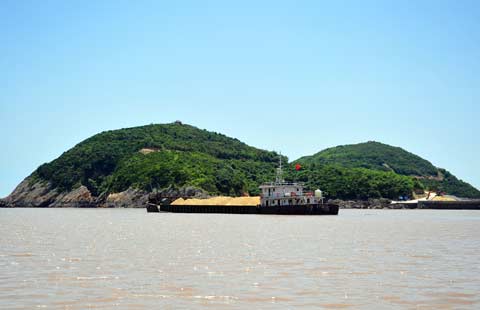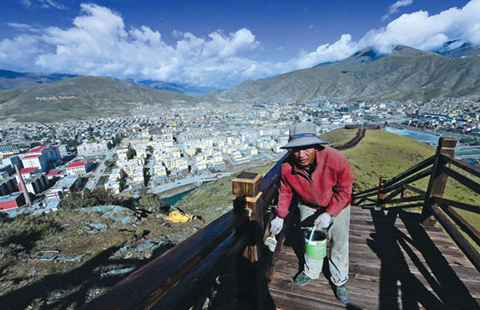Tibet sees progress, challenges in environment
(Xinhua) Updated: 2012-04-21 17:54Zhang Yongze explains the warming on the plateau has led to rising snow lines and melting glaciers.
"The Rongbuk Glacier at the foot of the Qomolangma (known as Mount Everest in the West) is melting by more than 10 meters per year," he says, adding that the glacier's melting has caused water levels in several lakes on the plateau to rise.
According to Xin Yuanhong, a hydro-geology engineer in Qinghai province, the glacier at the source of the Yangtze River has reduced in size by 232.13 square km over the past 30 years.
Zhang says increasing rainfall brought about by global warming can aid vegetation recovery in some areas of Tibet. However, in the long run, global warming will be detrimental to the local environment.
The melting of the glaciers has coincided with a continuous decrease in the plateau's water reserves, which will damage the health of the rivers originating from the plateau as well as the ecological system in their basins.
In order to tackle the problem of global warming on the plateau, experts have called for more joint effort on environmental protection and a comprehensive government strategy to solve the problems in terms of demography, natural reserves, environment and socio-economic development.
- Property registration bureau set up
- Xinjiang officials punished for dereliction of duty
- Sydney Opera House replica dismantled in NE China
- Xi praises Deng Xiaoping's legacy
- Pilots to be required to lose heavy accents
- 7 stand trial over deadly arson attack in E China
- Movie star Jackie Chan apologizes for son
- Demolished churches were built illegally, officials say
- President urges Uzbek investment boost
- State Council calls on Northeast China to act rapidly on slums, jobs







